Marsh Samphire – Identification, Edibility, Distribution
Salicornia species. (Mostly S. europea around Galloway)
AKA Glasswort (it used to be burned to create soda ash for use in glass making), Sea asparagus, Picklewort.
I have a love-hate relationship with marsh samphire. Mostly its love – the wide open seascapes where it thrives, its odd cactus-like appearance and its wonderful salty-fresh succulence. Even the silty, squelchy estuarine habitat where it grows has a “mud-glorious-mud” gooeyness that appeals to the filthy schoolboy in me.
So come June and July when marsh samphire is at its juiciest and hasn’t yet developed too much woody stem, I set off for the unctious oozy estuaries where it thrives with a light and happy heart, revelling in the wide open space, lonely gull cries and slightly foreboding maze of briny creeks and ditches that twist through the salt marsh guarding the shoreline. When I arrive at the unctuous silt beds at the tide’s nether reach and see its massed ranks of succulent shoots resolutely defying the salt and goo, I fall to my work with vim and relish.
It normally takes less than 5 minutes before I am crabbit, moaning and thoroughly in need of a good lie down. Standing ankle-deep in sucking mud, stooped or crouched with my back cramping at a right angle and plastered in fine, filthy silt soon takes its toll!
Now I know that I really shouldn’t moan. I’m blessed to be there, lucky to be gathering a small portion of nature’s bounty in a stunning setting. But I’m 6’3″ and worked as a coal man for 8 years and being bent double gathering hundreds of 5″ mini cacti from sucking mud hurts! If this weren’t already torment enough, this year I managed to drop my water bottle mouthpiece-down in the mud immediately after eating several handfuls of salty samphire. It was the hottest day of the summer and there was no clean fresh water for a mile in any direction. The gulls learned a few new exclamations that day, I can tell you!
To help cope with the pain and monotony, I find myself fantasising about labour-saving marsh samphire harvesting contraptions. Perhaps an old flymo, or a hover-lilo so I can float around horizontally with a straight spine. Realistically, the best i’m going to manage is a box to sit on, but even that will soon get clarty and firmly stuck in the goo.
No, the best things to take on a marsh samphire harvesting expedition are wellies, scissors, a bucket or fine mesh bag, a picnic, a sense of humour and some like minded friends to share the joy, pain and utter filth. Many hands make light work. Deep mud and quick tides can make estuaries dangerous places, so its safer to hunt in packs too. Get down and dirty, cutting the succulent top few inches above the woody stems. This allows what remains to regrow and set seed – it is both irresponsible and illegal to uproot them. Keep going until the boredom and pain become too much, then retreat to a dry bit of salt marsh to eat and enjoy the splendour of the setting as the vertebra in your spine crunch back into realignment.
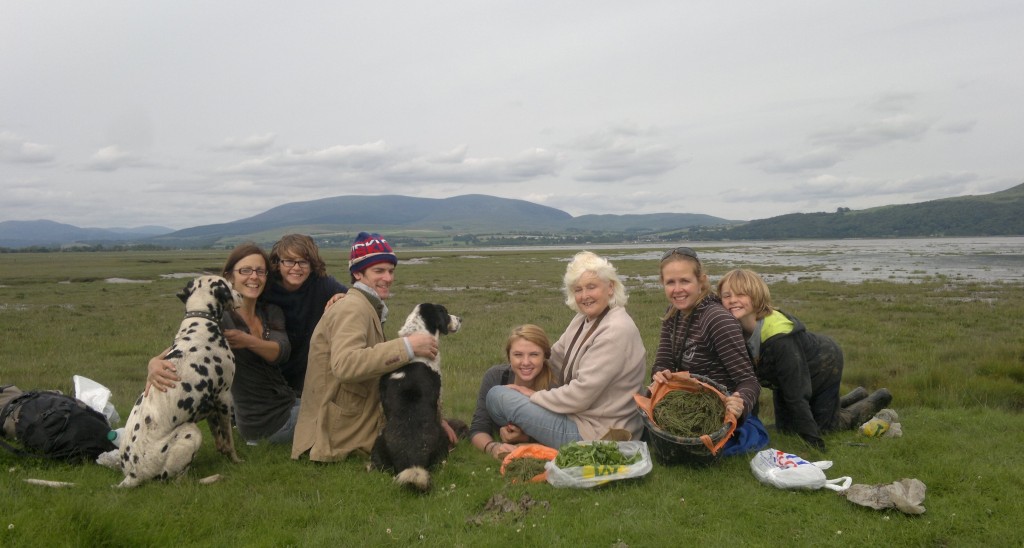
Click to read more and see more pictures of a samphing trip with friends – and find out what other edible goodies lurk in the mud
With a little effort you shouldn’t have much trouble finding marsh samphire. It is relatively common in suitable habitats around Galloway and most of the UK. These pictures and descriptions should give you a clear idea of where to start looking. Identification is straightforward too – there is really nothing else like it. Don’t confuse marsh samphire with its unrelated namesake rock samphire.
If you can find some clean sea water (not as easy as it sounds!) to thoroughly rinse the samphire in before taking it home, so much the better. You will save yourself a sink-full of silt and increase the fridge-life of your collection to a couple of weeks. If you rinse away their salty protection in fresh water they will degrade much more rapidly.
Whinging aside, marsh samphire is well worth all the depredations of harvesting it. As you would expect, it is salty, yet it still manages to be succulent and refreshing. The tenderest tips (even more laborious to harvest in May) add a delicious seasoned crunch to salads. Steamed for a minute or two, it makes a delicious finger food with lemon butter or hollandaise for dipping (if you are using older specimens that have developed a woody core, it is practical and pleasurable to drag them between your teeth to remove the flesh). Traditionally it is served as an accompaniment to fish (its the only vegetable that is never sold in greengrocers and only in fishmongers), but it is undoubtedly at its finest served with lamb – preferably salt marsh lamb – which is quite likely to have nibbled a fair bit of it when it was alive. Lamb generally responds well to salty flavours and my ultimate roast is leg of salt-marsh lamb studded with rosemary, garlic and anchovies and seasoned with samphire salt, served with steamed marsh samphire, sea aster and orache. It is pure heaven – a montage of brackish delights – salt marsh lamb served in a salt marsh – and an uplifting reward for the tribulations of harvesting. Being succulent, marsh samphire also pickles very well.
Related Pages:
Where you find marsh samphire you are also likely to encounter the following salt marsh delicacies
- Sea arrow grass – Identification, Edibility, Distribution
- Sea aster – Identification, Edibility, Distribution
- Orache – Identification, Edibility, Distribution
- Sea Purslane
- Sea Plantain

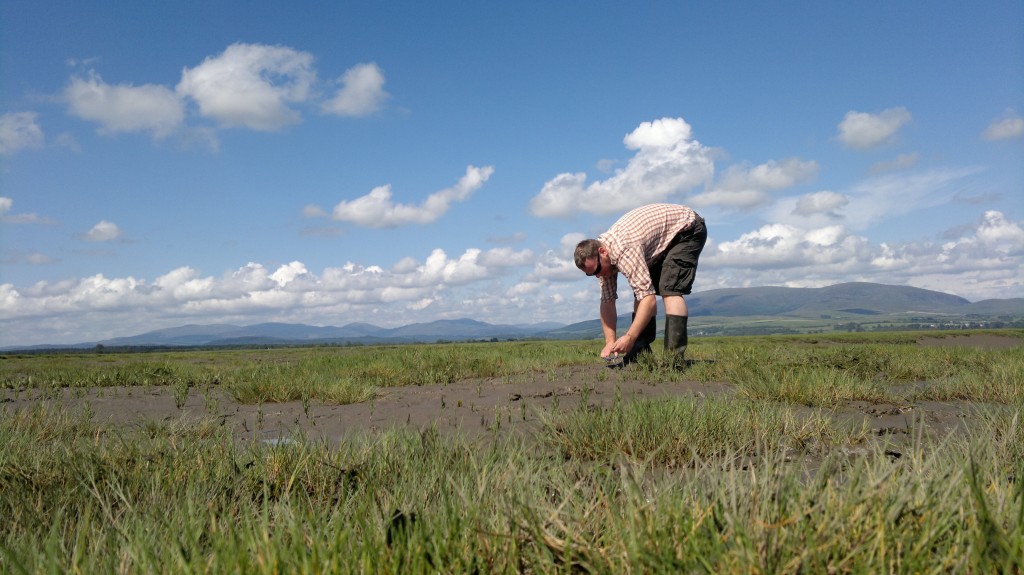
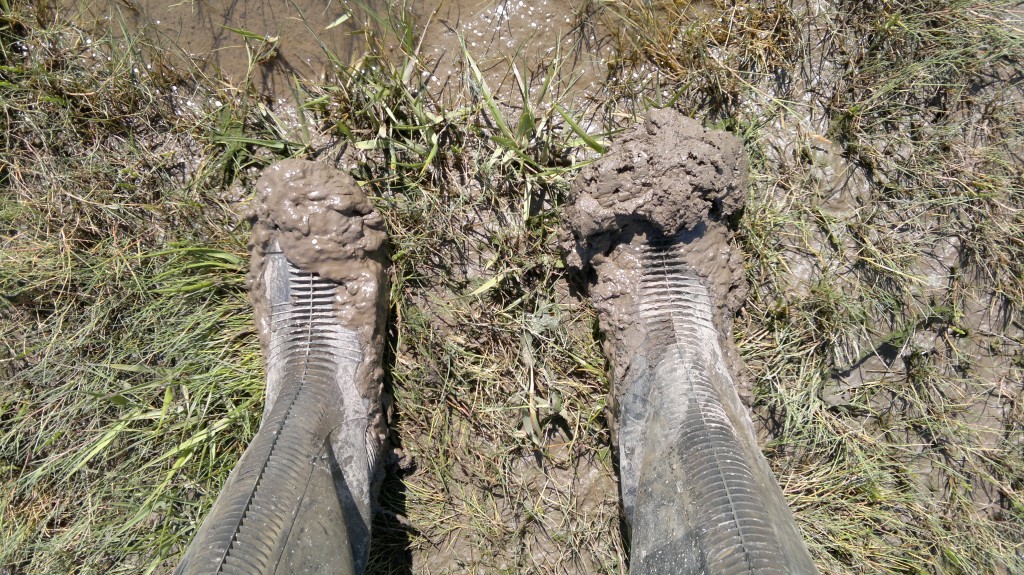
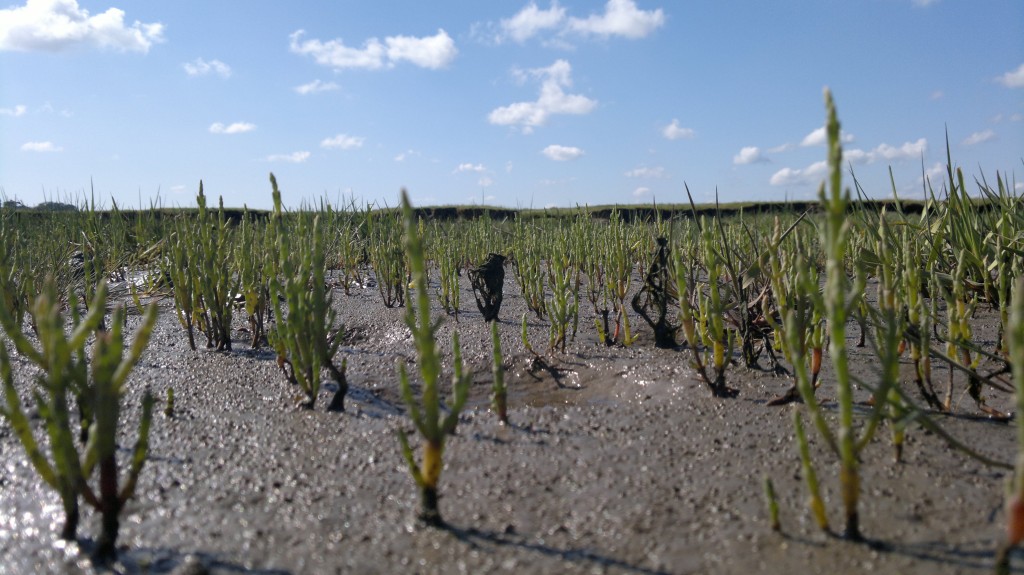
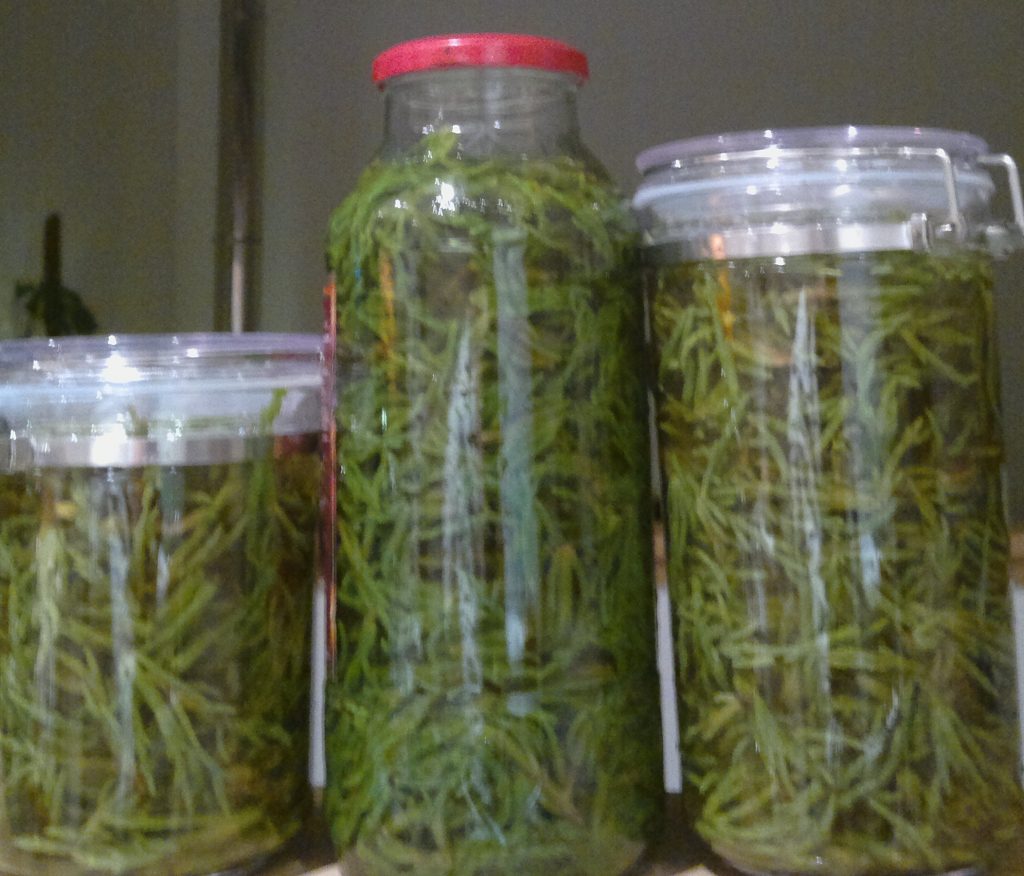
17 Comments
Hi,
Can you provide a great quantity of dried and not planted samphire? We will need 5 tons to deliver in 5 times, 1 ton at a time. We can order before the end of this month. Packaging: plastic bags of 1 kg, price:1 euro,
Sorry Bertrand, I don’t pick commercially – and certainly not on that scale. I think foraging is best when done for friends and family and prefer to teach people to gather for themselves.
The sea-fresh taste of raw samphire works really well with pate, takes away the slightly greasy taste of the liver but enhances the richness. E.g. steak rossini with toast, fillet steak, thin slice quickly pan-fried pate forestiere, then raw samphire on top. Very more-ish but eat in moderation, it’s quite rich
Hi Mark,
I’ve just discovered your website, it is wonderful!
Though I live in the Southern Hemisphere, a number of these wild plants grow ‘down under’, hence my great interest.
On the profile for Marsh Samphire, I could not find a link to the recipes, with clicking on the image, I get an enlarged jpg image & no text…
Is it obvious & me a ‘bit blind’ or is it not there…
Hi Karina,
That’s interesting that you get some of these plants down south (way down south!)
I’m afraid I haven’t got around to posting these recipes yet – hopefully they will serve as inspiration!
Happy foraging,
Mark
My Indonesian wife vis only 4ft 10 inches and can squat for hours with her bum an inch above the mud, a perfect samphire gathering machine. It grows well here on the Welsh Dee. After cooking and removing the stalks we vaccum pak and freeze it, we can then use it as a main veg all year round. Most of the samphire on sale is farmed and comes from Israel.
The scissors she uses are like the old sheep sheering snips, it saves your thumbs from blistering.
I heared of one guy who took a petrol strimmer to harvest it commercially, he cleared a whole area. Not exactly foraging is it?
Hi,
Great website! I have a couple of acres worth of samphire on my farm after an accidental flood from an estuary. We are keen to harvest it. A couple of questions i would love the answer to:
Do you know when exactly the best time to sow seeds is?
What date to harvest it?
Where on the stem do you cut it?
How to store it best to keep it fresh?
Thank you very much, hugely appreciated.
Hi Henry,
Lucky you…sort of!
Sew seeds late spring early summer
Usually harvested at midsummer, though see my article above about the trade off between size/woodiness.
Again, depends on when you are harvesting, and what amount of fibrous core you are happy with.
Again, see my article above: wash in clean sea water, not fresh. Might freeze well – i’ve never tried.
I have tried to germinate the seeds of four varieties of samphire each year for the past three years, none of them have ever produced anything. Edward
Try scallops cooked in burnt butter on a bed of samphire drizzled with sweet chilli & fresh bread.
Hi Mark,
Are you aware of any areas in Scotland where it grows?
Best,
Yanik
Hi Yanik, It is not uncommon in appropriate habitats around Scotland. I hope there is enough info in this post for you to track it down yourself. For reasons I explain in this post , I don’t divulge exact locations for any wild foods.
Mark
I had never heard if this before today when we were walking our dog along the river at Rowhedge nr Colchester in Essex and a lady pointed this plant out to us and explained how to forage for it and steam it. What a coincidence when we popped in the local pub for lunch after our walk and Marsh Samphire was served on my mussels as a lovely garnish!!
Hi Mark
Are there any poisonous varieties of marsh samphire?
Thank you,
-Mark
Not to my knowledge
Samphire cannot be harvested in SSSI sites? Or other protected areas?
It depends what the SSSI is designated for. SSSI’s protect specific species/ecosystems. It is not prohibited to considerately harvest species that are not related to the designation. For example, picking brambles on a SSSI designated for natterjack toads would be OK. In general though, I recommend doing extra research and treading/foraging even more carefully than usual in SSSI designated areas.
Mark